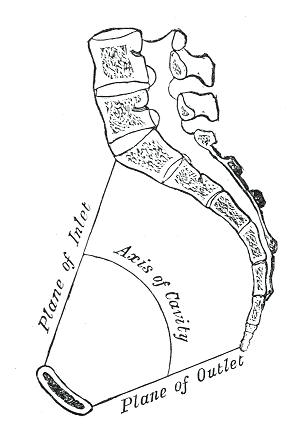Suspensory ligament of ovary
The suspensory ligament of ovary (also known as the infundibulopelvic ligament) is a fold of peritoneum that extends out from the ovary to the wall of the pelvis. It is an important structure in the female reproductive system.
Anatomy
The suspensory ligament of the ovary is a part of the broad ligament of the uterus. It contains the ovarian artery, ovarian vein, ovarian nerve plexus, and lymphatic vessels. These structures are crucial for the blood supply, innervation, and lymphatic drainage of the ovary.
Function
The primary function of the suspensory ligament of the ovary is to support the ovary and maintain its position within the pelvic cavity. It also serves as a conduit for the blood vessels, nerves, and lymphatics that supply the ovary.
Clinical Significance
The suspensory ligament of the ovary is often involved in surgical procedures such as oophorectomy (removal of the ovary) and salpingo-oophorectomy (removal of the ovary and fallopian tube). During these procedures, the ligament is typically ligated to prevent bleeding from the ovarian vessels.
Related Structures
- Ovary
- Broad ligament of the uterus
- Ovarian artery
- Ovarian vein
- Lymphatic system
- Female reproductive system
See Also
References
External Links
ligament of ovary| |_}} {{#replace:Suspensory ligament of ovary| |_}}
.
Transform your life with W8MD's budget GLP-1 injections from $125.
W8MD offers a medical weight loss program to lose weight in Philadelphia. Our physician-supervised medical weight loss provides:
- Most insurances accepted or discounted self-pay rates. We will obtain insurance prior authorizations if needed.
- Generic GLP1 weight loss injections from $125 for the starting dose.
- Also offer prescription weight loss medications including Phentermine, Qsymia, Diethylpropion, Contrave etc.
NYC weight loss doctor appointments
Start your NYC weight loss journey today at our NYC medical weight loss and Philadelphia medical weight loss clinics.
- Call 718-946-5500 to lose weight in NYC or for medical weight loss in Philadelphia 215-676-2334.
- Tags:NYC medical weight loss, Philadelphia lose weight Zepbound NYC, Budget GLP1 weight loss injections, Wegovy Philadelphia, Wegovy NYC, Philadelphia medical weight loss, Brookly weight loss and Wegovy NYC
|
WikiMD's Wellness Encyclopedia |
| Let Food Be Thy Medicine Medicine Thy Food - Hippocrates |
Medical Disclaimer: WikiMD is not a substitute for professional medical advice. The information on WikiMD is provided as an information resource only, may be incorrect, outdated or misleading, and is not to be used or relied on for any diagnostic or treatment purposes. Please consult your health care provider before making any healthcare decisions or for guidance about a specific medical condition. WikiMD expressly disclaims responsibility, and shall have no liability, for any damages, loss, injury, or liability whatsoever suffered as a result of your reliance on the information contained in this site. By visiting this site you agree to the foregoing terms and conditions, which may from time to time be changed or supplemented by WikiMD. If you do not agree to the foregoing terms and conditions, you should not enter or use this site. See full disclaimer.
Credits:Most images are courtesy of Wikimedia commons, and templates, categories Wikipedia, licensed under CC BY SA or similar.
Contributors: Prab R. Tumpati, MD


